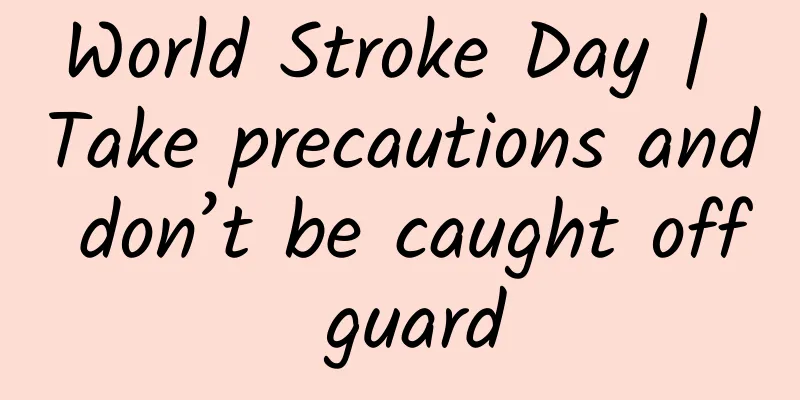World Stroke Day | Take precautions and don’t be caught off guard

|
May 25th of every year It is World Stroke Day Stroke has a high incidence High mortality rate and high disability rate The Lancet, an internationally recognized medical journal Published a major paper Subverted countless Chinese Understanding of “health killers” The study analyzed The incidence of diseases in China from 1990 to 2017 Cause of death The statistics are surprising The number one health killer of Chinese people It turned out to be a stroke! In recent years The incidence of stroke is rising sharply The age of onset is also getting younger Is there a connection between stroke and high blood pressure? How do we identify stroke symptoms ourselves? What are some strategies for preventing stroke? With these questions, let us have a conversation with Liu Guangzhi, Director of the Department of Neurology, Beijing Anzhen Hospital Affiliated to Capital Medical University, Standing Committee Member of the Immunology Branch of the Chinese Stroke Society, and Executive Director of the Beijing Neuroscience Society, to learn about the main symptoms and major risk factors of stroke, as well as relevant measures for the treatment and prevention of stroke, popularize relevant health knowledge, and enhance the public's health awareness. 01 "Stroke" in Traditional Chinese Medicine Is it the same as what Western medicine calls “stroke”? "Stroke", also known as "cerebral infarction", is an acute cerebrovascular disease. It is a group of diseases that cause brain tissue damage due to sudden rupture of brain blood vessels or blockage of blood vessels that prevent blood from flowing into the brain. Liu Guangzhi introduced that the concept of "stroke" in traditional Chinese medicine was first proposed in the book "Golden Chamber" by Zhang Zhongjing, a famous doctor in the Han Dynasty. The concept of stroke in traditional Chinese medicine includes three aspects: one is the invasion of evil wind into the body; the second is the blocking of meridians by phlegm and dampness; the third is qi stagnation and blood stasis. The pathological effects of these three aspects together form such manifestations as drooling, crooked mouth and eyes, which are called stroke. From the perspective of Western medicine, because the blood vessels are affected by the pathological changes, ischemia or bleeding occurs, causing the corresponding nervous system function to be damaged, and some symptoms that appear are consistent with the "stroke" in traditional Chinese medicine. Although the symptoms are consistent, the theoretical basis of stroke in traditional Chinese medicine and Western medicine is different. 02 High blood pressure is one of the most important risk factors for stroke Liu Guangzhi introduced that the INTERSTROKE study is a large case-control study on stroke. In 2010, the study established the top ten risk factors for stroke: high blood pressure, high blood lipids, smoking, lack of exercise, abdominal obesity, heart disease, diet, alcohol, diabetes and psychological factors. Among them, high blood pressure is the most important risk factor. It is reported that for every 10 mmHg increase in systolic blood pressure, the relative risk of stroke increases by 49%, and for every 5 mmHg increase in diastolic blood pressure, the relative risk of stroke increases by 46%. Therefore, preventing high blood pressure has become one of the most important ways to prevent stroke. Long-term patients with high blood pressure will accelerate cerebral atherosclerosis if they are not effectively controlled. Over time, blood vessels will narrow, which will hinder blood flow and lead to ischemic stroke. When the walls of the cerebral arteries become brittle and necrotic, the cerebral arteries will rupture, which can cause hemorrhagic stroke. Therefore, patients with high blood pressure should actively and standardizedly control their blood pressure to meet the standard, avoid bad habits, do outdoor sports appropriately to control their weight to meet the standard, and pay attention to a balanced diet and regulate their emotions. 03 Pay attention if you experience these symptoms! Teach you how to quickly identify a stroke Time is life. It is very important to quickly identify the symptoms of stroke and send the patient to the hospital for treatment in time! In daily life, how should we identify the symptoms of stroke? Liu Guangzhi mentioned that there is a very simple "FAST formula" to identify the early symptoms of stroke. The "F"-Face refers to the face. Facial asymmetry or crooked corners of the mouth are symptoms of stroke. You can ask the patient to smile to see if there is any asymmetry on the face. If the patient has asymmetrical face when smiling, you can consider whether a stroke has occurred. "A"-Arms refers to the arms. Sudden weakness or numbness in the arms usually occurs on one side of the body. When the stroke patient raises both arms, the arms on both sides usually cannot be raised at the same time or the strength is inconsistent; "S"-Speech refers to language. Stroke patients usually speak unclearly and cannot understand other people's language; "T"-Time refers to time. The above symptoms indicate that a stroke may occur, and you should call 120 for help immediately. Liu Guangzhi reminded that once symptoms appear, you should be particularly vigilant. Time is very important for the future treatment and consequences of the disease. The earlier the treatment, the better the effect. 04 Stroke is becoming younger More "prefer" people with bad living habits Stroke was once considered a disease of old age. However, with the increasing incidence of stroke, it is no longer a new thing for people in their twenties and thirties to suffer from stroke, which constantly refreshes people's understanding of stroke. Liu Guangzhi said that stroke incidence has tended to be younger in recent years, and the hospital often sees patients aged 30 to 40. A large number of them have bad living habits such as high work pressure, staying up late, and irregular diet. Modern people's intake of salt, sugar and oil is gradually increasing. These changes will increase the risk of chronic diseases, such as hypertension, diabetes, hyperlipidemia, etc., and at the same time cause an increase in the incidence of stroke. With the changes in modern urban life and work needs, living habits have also undergone tremendous changes. Smoking, high life pressure, heavy family burden, lack of exercise, irregular sleep and rest schedules, etc. reflect the unhealthy lifestyle of some young people, and youth stroke caused by them is also common. Another important reason is that a large number of people tend to think that they will not get sick because they are in their prime, and lack the awareness of health management. For example, they do not pay attention to abnormal blood lipids found during physical examinations. These phenomena also reflect from another perspective that the awareness rate of some health knowledge about stroke is still relatively low, and further popularization is necessary. 05 Strategies to prevent stroke Stroke is not far from us. The damage caused by stroke is not only to the patient himself, but also often involves the entire family and the entire society. Fortunately, such a serious disease can be controlled through the management of risk factors. As long as we pay attention to these risk factors and do a good job of prevention, we can reduce the incidence of stroke. As for the early prevention of stroke, Liu Guangzhi reminded that we should take seriously diseases such as hypertension, diabetes, heart disease, hyperhomocysteinemia, sleep apnea syndrome (snoring), etc. These diseases will increase the risk of stroke. Timely treatment of these diseases can reduce the risk of stroke. From a life perspective, controlling weight, keeping BMI within a normal range, not over-consuming high-calorie foods, paying attention to monitoring blood pressure, controlling salt intake, maintaining a calm mood, and insisting on exercise are all strategies for preventing stroke. We should also pay attention to whether our bodies have signs of stroke in our daily lives, such as high blood pressure, dizziness, headache, etc. If any one or a group of symptoms in the "FAST" principle appear, we should go to the hospital immediately to reduce the adverse consequences of stroke. Produced by Beijing Association for Science and Technology Media Center Written by Liu Daheng The pictures are from Jiankangjie and Guangming.com |
<<: International Thyroid Awareness Week丨Do you know the largest endocrine gland in the human body?
Recommend
What is the cause of the root rot of the Red Star Pineapple? How to remedy the root rot of the Red Star Pineapple?
Red Star Pineapple is a common flower plant in li...
I ovulated three days after my period.
I believe everyone knows that women during their ...
What medicine is used for morning sickness infusion
Morning sickness is a very normal reaction to pre...
I have bleeding from my lower body but it's not my period. What's going on?
It is more complicated if the genitals bleed but ...
A woman sneezed and her brain suddenly "leaked". This type of person is very likely to suffer from this disease!
Many people have experienced choking and sneezing...
How to choose frozen scallops? How to clean scallops
Friends who love seafood usually like to eat scal...
Revealed! The little-known side of health tea
Drinking tea has a long history in my country. Dr...
What are the symptoms of cervical erosion
Cervical erosion often occurs in adult women. The...
Control nutrition with your palm: the secret of healthy diet under the palm rule
Author: Zeng Yaxing Beijing Children's Hospit...
Signs of closure of the girl's bone line
Bone closure is a growth stage that everyone must...
Girlfriend's feet smell
We are actually not unfamiliar with foot odor. Ma...
Condom broken pregnancy chance
In modern society, education is more popular and ...
Is it better to have menopause early or late and what to pay attention to
Menopause is something every woman goes through. ...
Do birth control pills cause amenorrhea?
Birth control pills are a common method of contra...
What should girls do if their teeth are yellow?
We have all heard the idiom "a talented man ...









